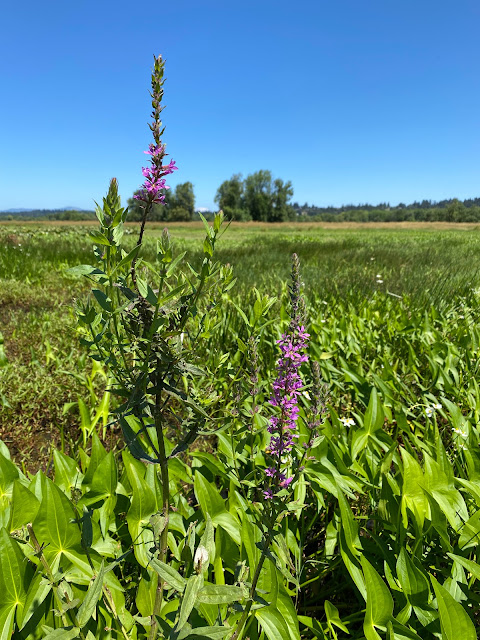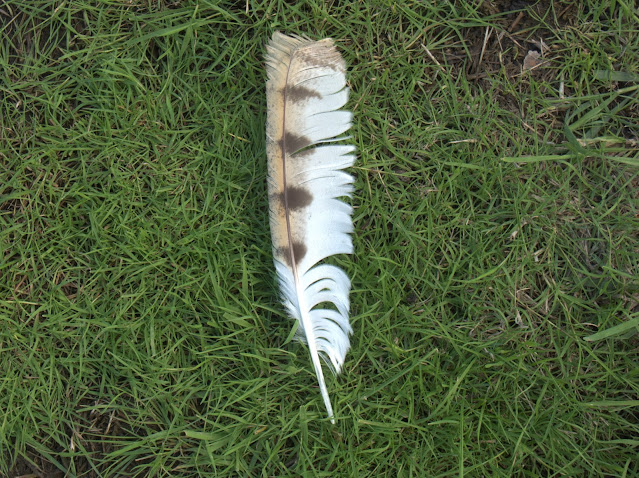New Beginnings
-February 2nd, 2022
 |
| Photo: Me (Justine) backpacking in Alpine Lakes Wilderness in WA |
My first month back at the refuge has been quite different from working during the summer. Seeing the inundated wetlands within the River 'S' unit and the thousands of overwintering waterfowl was an exciting change from the extremely dry and hot summer. With the new COVID-19 variant, Omicron, causing unprecedented infection rates and hospitalizations throughout Oregon and Washington, we have unfortunately postponed volunteer work parties until further notice. However, this has allowed me to get more acquainted with the ongoing habitat restoration projects managed by the Friends.
Planting Along Auto Tour Route
I must confess, one of the most satisfying
aspects of working as a habitat technician is planting! It is such a
rewarding experience to give a young plant a new beginning. If you have driven around the Auto Tour Route on the River 'S' unit lately, you may have noticed some new developments near Wetland #6 (just past the hunter's gate). Oregon ash saplings (Fraxinus latifolia), have been translocated from the Carty Lake trail to an area that once was a prolific stand of invasive Himalayan blackberry (Rubus armeniacus), which was recently removed by our trusty volunteer crews. In addition, native wildflowers and shrubs, such as tall goldenrod (Solidago altissima) and red flowering currant (Ribes sanguineum), were planted along the forested edge adjacent to the newly planted ash trees. Fresh wood chips, harvested from fallen Oregon ash trees on the refuge, are placed around each new planting to inhibit any invasive weed growth, increase moisture in the soil, and hopefully improve the survival rate.
 | ||||
| Photo: Oregon Ash trees planted in previously removed Himalayan blackberry stand |
 |
| Photo: Various shrubs planted across from Wetland #6 on Auto Tour Route |
Turtle Lake Restoration
With all the much needed rain over the past few months, the high water levels at Turtle Lake have created some challenges. Unfortunately, many of the willows planted over the summer have been washed away with the heavy rains and high tides, but we cannot get too discouraged because those lost willows are likely creating habitat or providing a much needed food source for wildlife elsewhere.
Britta, who is also a previous summer Biological Technician for Ridgefield, was rehired temporarily to work on the Turtle Lake project. Britta recently graduated from Washington State University and hopes to continue working in habitat restoration and wetland ecosystems. Her favorite part about working on the refuge is being able to identify and learn new bird species. Outside of work she enjoys adventuring with her dog whenever she can. Britta has been working tirelessly to harvest a variety of native willow species around the refuge to be planted along the Turtle Lake shoreline. In January, we were able to harvest, process, and plant approximately 550 willows at Turtle Lake.
 |
| Photo: Britta crossing the channel at Turtle Lake via kayak after planting willows |
 |
| Photo: Beaver scat found at Turtle Lake |
If you have never seen beaver scat it is really an amazing sight! Beavers are semi-aquatic herbivores and their diet consists mainly of tree bark, woody stems, roots, and other aquatic plants. With this limited diet, it is not too surprising that their scat looks almost identical to a clump of sawdust. From my observations it is completely odorless making it the most innocuous excrement I have ever personally encountered in the field.
On that note, it is great to be back at Ridgefield and I am looking forward to documenting our progress related to habitat improvements along with other oddities synonomous with fieldwork.
-Justine Casebolt


An excellently composed, informative, and entertaining look at all the fabulous work being done to preserve and invigorate our precious environment. Keep up the wonderful work!
ReplyDeleteThanks so much for your kind words!
Delete